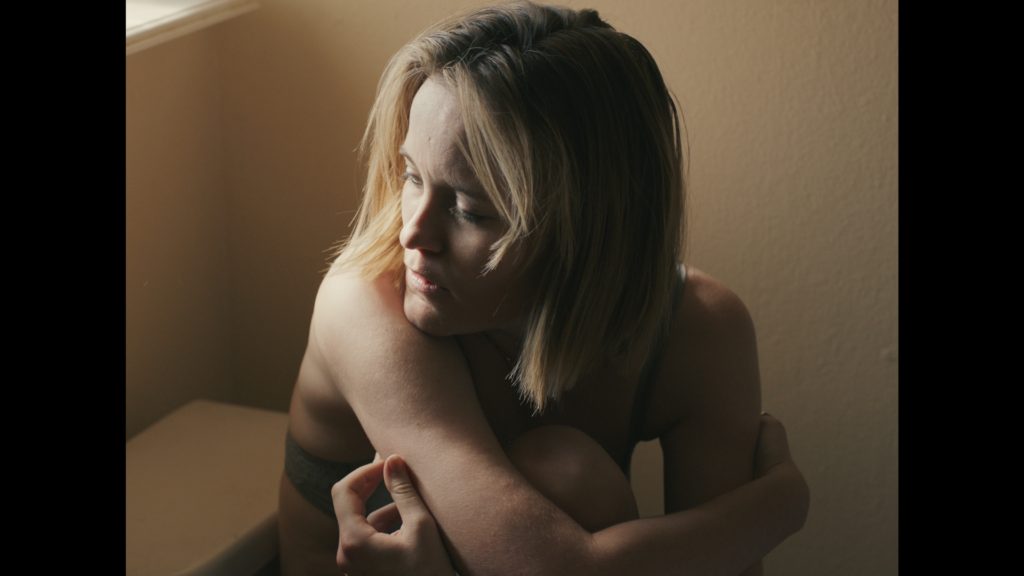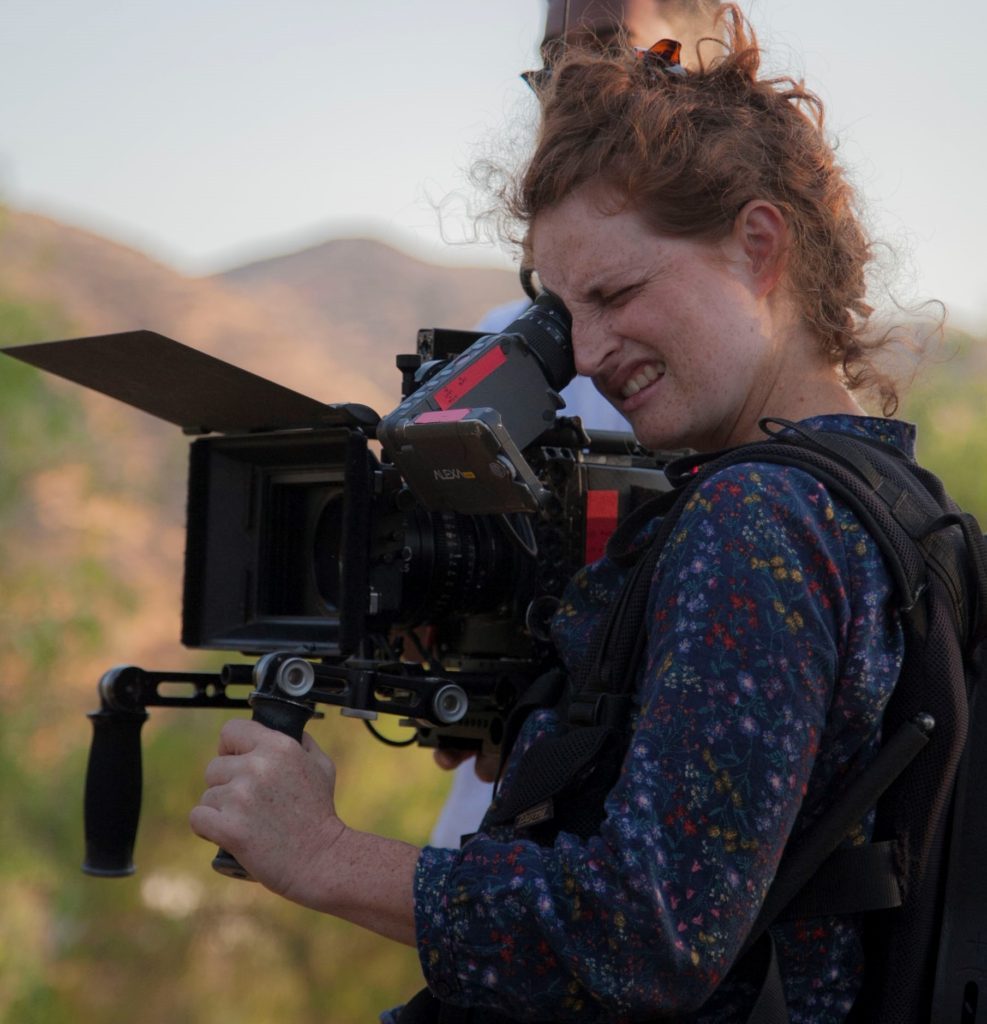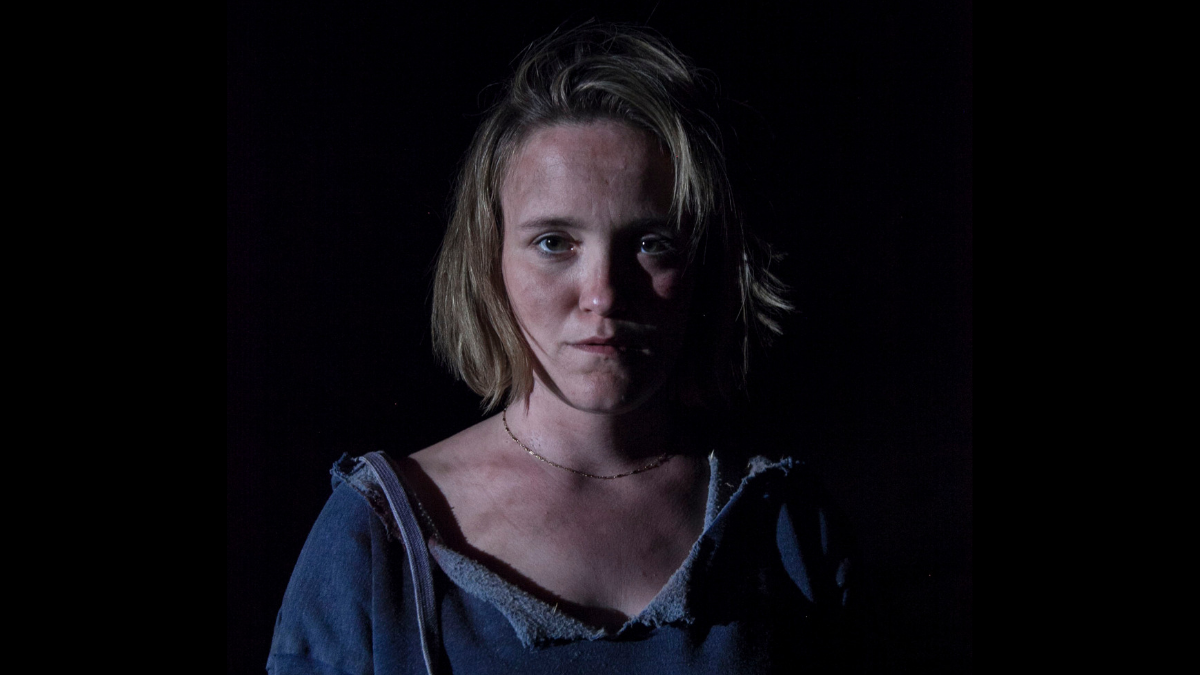Please join me in speaking with the Director, Writer, and lead Actress, Jaclyn Bethany as well as Director of Photography, Irene Gómez-Emilsson, of the independent feature Indigo Valley.
The film follows the story of estranged sisters Louise and Isabella. When Isabella unexpectedly joins Louise and her new husband John on their honeymoon through the wilderness, tensions arise and secrets between all three begin to surface in unpredictable and dangerous ways.
Sigma partnered with the filmmakers in order to help execute their vision. They shot with a full set of the Cine Full Frame Primes and were hosted at Sigma Burbank for an exclusive preview screening of Indigo Valley.
Note: Comments have been slightly modified for brevity and clarity
INTRODUCTIONS
Tell us about yourself, who are you as an artist?
JACLYN: I am a writer, actor and filmmaker originally from Jackson, Mississippi. Being from the Deep South has really shaped me, there are so many amazing storytellers from Mississippi – Tennessee Williams, William Faulkner and Eudora Welty. I think the intimacy of Southern Gothic is apparent in my work even if it is not set in the South. I also spent some time in Europe and fell in love with the European way of filmmaking – especially as explored through Scandinavian and German films. There’s a really beautiful film set/made in Texas but with a very European sensibility – it’s called Layla in The Sky directed by a very talented filmmaker named Micah Magee. I remember sitting in an arthouse cinema in Paris (Paris has the best cinemas) and thinking that was the type of film I wanted to, at least initially – make. I’m always learning and growing as an artist, being shaped and challenged.
IRENE: I am a cinematographer based in London, I have lived in Mexico, France and the UK and have ties with Iceland. I have a lifelong love story with film and won’t be falling out of love anytime soon! As a teen I watched all of my parents’ collection and loved going to the local art cinemas on my own. I then went to study for a first degree in film studies in Paris, finally I came to the UK where I did a Masters in filmmaking at the London Film School. Cinematography is to me the way to be closest to the medium, its plasticity, its ability to portray thought and emotion, I am fascinated ( or obsessed?) with the expressive assets of light, composition and movement. I also love the fine balance between control and spontaneity, the need to keep your eyes wide open in order to catch the unexpected, to be available for the unpredictable.
How did the two of you come to team up on this project?
JACLYN: We met in 2015 at the Reykjavik Film Festival where we both participated in the talent lab. Irene is half Icelandic, and I was just looking for an excuse to go to Iceland… I actually got the idea for Indigo Valley on that trip. I was living in London at the time and Irene was too. I needed help making a short for the AFI Conservatory admission process and I really liked Irene’s work, so I asked her to help me out. I think it was even then, almost four years ago, that I mentioned the idea for the feature to her. We worked a lot together on various projects in between, and over time it was just really apparent to me because of our collaboration and similar sensibilities, that Irene was the right cinematographer for this story.
IRENE:I have been working with Jaclyn for four years now. We have done about seven projects together. I am always honoured to be trusted with Jaclyn’s stories and ideas and a pleasure to collaborate with her. Her visual an innovative nature allow room for experimentation and our sensibilities are similar, we understand each other very well on and off set..

STORY
What aspects of Indigo Valley, both story and technical based, do you find most unique about it?
JACLYN: I think the way we shot it and the editing. The cinematography by Irene and the pace-filled poetic fluidity of the editing by our BAFTA winning editor Selinda Zhou, really made it come alive. Even though we shot it in a wide desert landscape, we chose to focus on the characters both with the cinematography and the editing and didn’t rely just on the beautiful setting. I think putting the characters in a specific setting like the desert tells so much anyway, we didn’t need to continually focus on the setting. It was more important to me that the story and characters were relatable and felt it could take place anywhere. We also shot with a prism lens for some of Isabella’s so co called “hallucination moments,” and then tied some of those moments in with really quick paced, sporadic editing which I felt really added to her character’s mental state at those times. That was something I always had in mind even from just writing the script.
You mentioned before that you’re interested in 3 person dramas as well as sisterhood. How did you visually express those concepts on screen in Indigo Valley?
JACLYN: Yeah, I think that comes from my love of theatre as I mentioned above: Miss Julie, Streetcar Named Desire, Three Sisters, Uncle Vanya – all stand out as texts that have really inspired me. It’s interesting that in Indigo Valley there are not many scenes that feature all three characters interacting with each other. It’s often my character Isabella with her sister Louise, and Louise with her husband John. Isabella and John cross paths eventually a bit later in the film. I remember this was mentioned me to once, the fact that there weren’t scenes between the three of them. But the thing is it was Isabella’s story, and as a character she is already so uncomfortable in the situation, I felt like she would want to avoid the three of them being together. I think Louise wants it to seem normal between the three of them at first. She makes an effort but is also resentful and confused about what to do considering Isabella’s situation.

Irene, since Jaclyn was the writer, director and lead actor, how did you make sure that your “signature” was on the project as well?
IRENE: It is totally a team effort, and I don’t consciously think about making sure my signature is felt in the final product. My aim is to bring to life the director’s vision, tell a story, portray thoughts and emotion. Of course as a DP you leave a trace and camera work is somehow embodied, but what I care about is creating images that the public will be interested in, that will draw them into the story, the characters. Other that that I just love the whole process, from pre production to grading and beyond.
TECHNICAL
When working in a wide open desert landscape, what were some of the advantages and some disadvantages?
JACLYN: Irene can speak a little more to this, but I think it was quite challenging because you see everything. Nothing in that landscape is hidden. So when shooting wide – you have to be very precise about what you shoot. I think there’s nowhere like the California desert. It’s eerie, you feel like you are in another world. Just when you are living and breathing in that climate and surrounding as a human being, it changes the way you feel. So that in a way, that grittiness – was an advantage. It made us really feel like we were living the film.
IRENE: The desert is a character and it brings so much to the film, it is not merely a backdrop but a structuring element to the film so shooting there felt right. I loved how we progressed from a lusher landscape toward a harsher, more barren space as the story becomes more and more claustrophobic. The opposition I think is very interesting!

The film is shown in multiple aspect ratios, walk us through that decision?
JACLYN: It was literally an idea I had and Irene kept referencing the film Jorga – which is in 4:3 in a desert landscape. I wanted the present and the past to feel really different, and the flashbacks for the most part focus on my character’s sister Louise, and it was important that she felt really open and full at those points in the stories and as the film goes on it becomes more claustrophobic for all the characters, and I think the 4:3 really helped with that.
IRENE: 4:3 is great for portraiture, and as it is a very intimate, psychological drama and when Jaclyn suggested it it made sense to me. We raised a few eyebrows with this decision as you would usually shoot either 1.85 or scope when shooting in an open landscape to better show the magnitude of the space itself. 4:3 makes the film quite claustrophobic in a way, despite being set in a vast open space, it closes in on the characters and I feel it helps it focus on their inner journeys, their relationship to the landscape is internal. I really liked framing in 4:3 ,it I felt as if I was very close to the characters, focused on them. The flashbacks are in 16:9 and they bring some kind of relief, an openness, as if you could get some hope from the past.
Did you feel the Sigma lenses helped to execute your vision?
IRENE: The Sigma Cine lenses are a beauty and they totally helped us achieve our look. I love their softness and the richness with which they transmit the colours. The skin tones are beautifully rendered, as well as the camel tones of the desert, but also the brighter colours we used on the more psychedelic scenes. I also like the glass vignetting reminiscent of vintage lenses, which I think gives the film a melancholic aspect. The look reminds me a lot of Tarkovsky’s Mirror, which I had in mind when preparing and shared some images with Jaclyn. The bokeh is also lovely, at one point I had my whole crew commenting on it! Practically, they are beautifully engineered and lightweight, so it is very easy to work with them
As a Director of Photography, what is your most trusted piece of equipment?
IRENE: Every little piece of equipment counts! I think having a solid camera is key. It is tempting to use lower range cameras for low budget films, as the footage can be great at a lower price, however the ergonomy, the solidity and reliability of a camera is essential to get through a shoot smoothly and be ready for anything that might happen. For Indigo Valley the Alexa Mini was a great ally.

What were your go to lenses on set? Which ones were you using most often?
IRENE: We used the 35mm and the 50mm most often, we did occasionally used the 24mm and the 85mm. I think the primary lenses helped towards the intimate feel of the film, it makes you feel you are in the character’s head, it feels embodied. It also helped blending the characters to the desert . I love the 50mm combined with the fractal filters (prism) we used, it is so powerful!
When you start a project and you’re considering your camera and lenses, what are the first things that come to mind?
IRENE: After reading the script I want to hear about the director’s visual ideas and references. I want to have a sense of the look they are thinking of and then I can suggest a camera, and lenses. Jaclyn always has some great visual input and precise references that help me find the perfect set up. I love experimenting with lenses and always try to find a way to sneak in different optics! Of course there is always also the budget factor… quality within budget!
FUTURE ENDEAVORS
What project is up next for you?
JACLYN: I just finished shooting my second feature film – I didn’t direct, just produced, wrote and appear in a lead role. It’s called Under the Lantern Lit Sky and it’s a re-imagined prequel to A Streetcar Named Desire. I am shooting a music video featuring one of the songs from Indigo Valley so I am really excited about that. I’ve really enjoyed collaborating with my composers Maesa Pullman & Dalal Bruchmann. I’m also acting a good bit, and writing a few new scripts. A horror movie Thomasina with fellow filmmaker/actress Greta Bellamacina and two Mississippi set stories. I have a few shorts in festivals, but my real focus right now is getting all these films out there!
IRENE: I am starting a PhD in film by practice next month, my topic is cinematography and landscape and it is closely related to my experience as a DP on Indigo Valley, both the feature and the proof of concept short we shot in Iceland in 2017. I will be experimenting with cinematography and writing about it. I am also involved in the production of a short film adapted from a play by British playwright Howard Barker, directed by Swiss director Christina Ruloff. This is far from the American desert as it is set in a morgue in the UK! Jaclyn has also new projects she has shared with me, I am very much looking forward to our next project together.
We are very grateful that Jaclyn and Irene took the time to tell us about their experience working on the film. If you want to keep up with Indigo Valley then check out their website at www.indigovalleyfilm.net/ . You can also follow them on Instagram at: @indigovalleyfilm @jaclyn_bethany @irene.frax
As always, you can follow Sigma on our social channels (Facebook) and (Instagram) and check our website for upcoming events. If you want to stop by, you can always visit us or demo our lenses at Sigma Burbank 148 S. Victory Blvd, 10 am – 5 pm Mon – Fri. For more information call: 213-699-0561 or email burbankinfo@sigmaphoto.com

